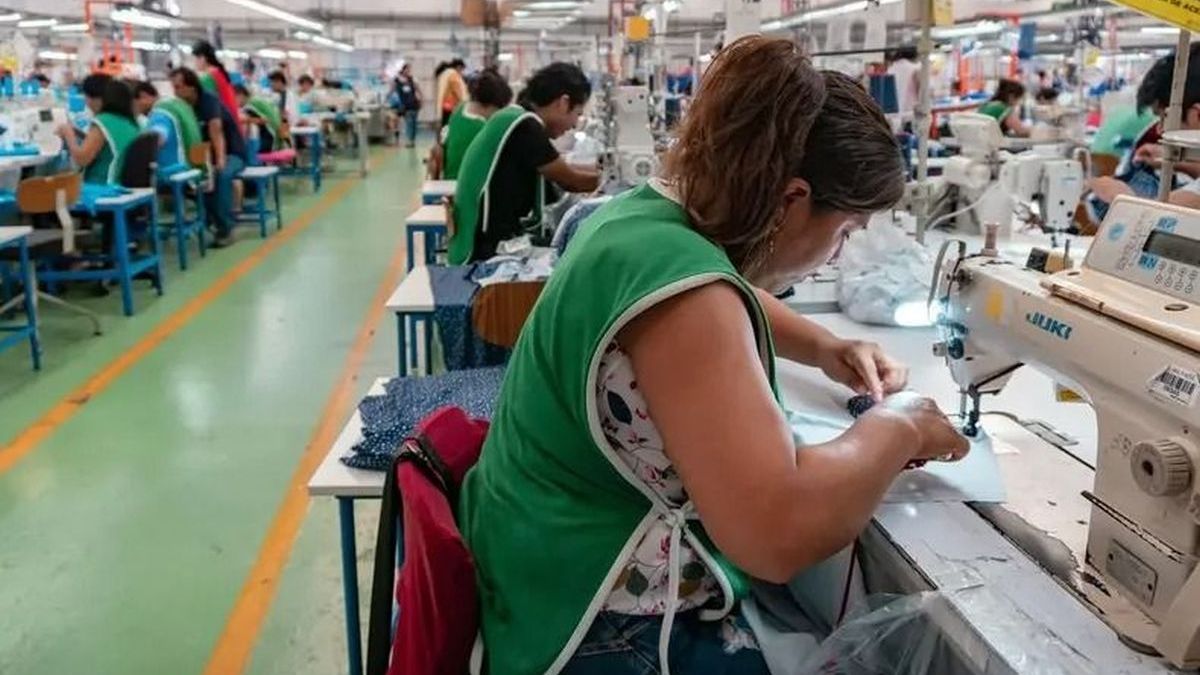Food and drinks
The sector registered an annual drop of 13.1% at constant prices in October and an improvement of 1.2% in the monthly comparison. For the first ten months of the year, there is an accumulated decrease of 15.6% annually. The industries operated with 63% of their installed capacity, 0.8 points above September.
Activity has not yet reached the bottom of the recession, with the beverage sector being the most affected by the drop in consumption, especially in the production of beers, soft drinks, powdered juices and wines. Other items affected in the month were dairy and baked goods, where the companies consulted indicated that the quantities consumed fell and they adjusted production stocks.
Textiles and clothing
Production rose 0.2% annually in October and 2% compared to September. For the first ten months of the year it accumulates a drop of 6%. The industries operated with 57.8% of their installed capacity, 3.2 points above September.
Companies observed greater demand for clothing, marked by price stability and bank financing that boosted consumption. There were also many businesses that came with low stock levels and increased their stocks for the Holidays. The greater entry of imported products worries the sector.
Wood and furniture
In October, the sector grew 0.3% annually at constant prices, and 5.8% in the seasonally adjusted monthly comparison. In the January-October period, activity fell 12% compared to the same months last year.
During the month, industries operated with only 66.5% of their installed capacity, almost 5 points above September. The sector remained more active, favored by price stability and greater financing options. In any case, the companies consulted indicated that large orders have not yet returned.
Metal, machinery and equipment, and transportation material
The sector had an annual contraction of 2% in October, at constant prices, and grew 5.1% in the monthly comparison. For the first ten months of the year, there is a 14.7% drop compared to the same period in 2023. Industries operated at 59.3% of their installed capacity, 0.8 points below September.
Despite the fall, the companies consulted indicated that the market began to move and signs of reactivation could be observed. It is a sector where new investments are being made to improve competitiveness and it is expected that this will translate into better prices and greater demand. In the manufacturing of metal products there are companies working fully.
Chemicals and plastics
In October, the sector experienced a contraction of 6.6% annually at constant prices, and a rebound of 7.4% in the monthly comparison. For the first ten months of the year, production accumulates a drop of 19.2% compared to the same period in 2023. During this month, industries operated with 66.3% of their installed capacity (vs. 63.7% in the month former).
Paints, detergents and plastic products are three of the items with the greatest drop in production of the month. On the other hand, pharmaceutical products, especially those linked to the veterinary sector, had better dynamism.
Paper and prints
Activity fell 20.6% annually at constant prices in October, being the sector with the greatest decline. In monthly terms, however, it had an increase of 3.6%. For the first ten months of the year, activity accumulated a drop of 16.3% compared to the same period of the previous year. The companies operated with 67.9% of their installed capacity.
Both paper products and the publishing and printing sector had a very weak month in October. Companies consulted indicated that they are having some difficulties with their suppliers and customers. With the former because they require them to pay for the merchandise in advance and, with the latter, because they delay payments.
What do SME industries expect by 2025?
The most notable measure that SME industries expect is the reduction of taxes (national and provincial) and municipal rates. This joint demand represents 61.4% of the responses, followed by the stimulation of domestic demand with 13.6%.
Companies are more concerned about high costs outside the production process than about the drop in production itself, where they somehow hope for a quick recovery.
The generation of incentives for hiring personnel ranks third among the measures considered most effective for SMEs in the short term, with 8.8% of the responses, rising about 0.8 percentage points compared to the last measurement. .
Likewise, in October, the obstacles most identified by entrepreneurs were the high costs of production and logistics, which constituted 39.9%. The lack of sales, for the first time, left the first place of the obstacles and represented 35.3% of the responses, registering about 6 percentage points less than the previous measurement. Likewise, these two factors stand out as the most significant difficulties for the growth and stability of SMEs.
Faced with a context of low demand and high fixed costs, a certain change is observed with respect to the last measurement regarding the measures taken by industrial SMEs. 32.2% diversified their production, incorporating new products and providing additional services to their usual activity, increasing almost 5 percentage points in relation to the previous measurement. Although 27.9% reduced their operating expenses, this measure ranked second for the first time, losing about 2 percentage points compared to the last measurement. In turn, only 8.5% of industries reduced working hours.
Regarding the distribution of SME industrial companies that experienced difficulties paying salaries during October 2024, broken down by sector, it is observed that the “Textile and clothing” sector no longer leads the ranking. For the first time, “Food and beverages” with 24.5% of the responses was placed in first place. Followed by this item is “Metal, machinery and equipment, and transport material” with 22.6%. Other affected sectors include “Textiles and clothing” (18.9%) and “Wood and furniture” (13.2%).
Source: Ambito
I am a 24-year-old writer and journalist who has been working in the news industry for the past two years. I write primarily about market news, so if you’re looking for insights into what’s going on in the stock market or economic indicators, you’ve come to the right place. I also dabble in writing articles on lifestyle trends and pop culture news.




